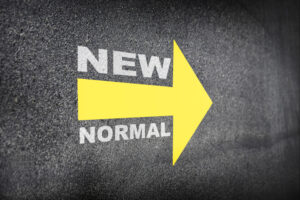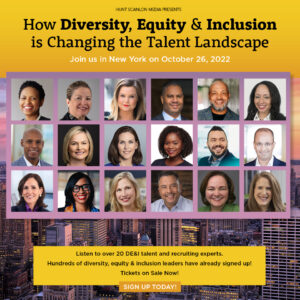The Road Ahead; Approaching 2023

October 14, 2022 – “Disruptive” has, in the wake of tech-speak’s infiltration of our everyday speech, taken on a positive connotation: industry “disruptors” are shaking things up in creative, future-oriented, and highly profitable ways. According to the report from ZRG Partners, it has not, however, lost its older, negative, connotation: the pandemic has been broadly disruptive at every level of everyone’s life. As a talent advisory firm, ZRG is particularly concerned with how work has been disrupted by the past two years. What changes are going to stick around, and what will be the bedrock of the next “normal”?
Hybrid Work
Hybrid work and work-from-home (WFH) have become standard for office-based work that can feasibly be completed remotely. ZRG doesn’t expect that this will change substantially in the future, although there are new challenges that arise from these arrangements. According to report from Brimstone Consulting, communication is key to designing a hybrid workspace that leads to success. “Work culture in a hybrid/WFH future will not look like it did when most employees reported to a common office space,” the ZRG report said. Leaders will need to think about how to manage behaviors, expectations, systems, and symbols in future hybrid/WFH environments.
This changed work environment is not spread universally across all industries, according to the ZRG report. “Manufacturing is still an in-person task, whether it’s automotive manufacturing or the manufacture of mRNA vaccines,” it said. “Management may be able to adopt a hybrid work schedule, and new technologies will play a major role in whether and how manufacturing can become a hybrid workspace.”
Video conferencing has become a keystone to the current normal in many businesses. Zoom alone has seen revenue growth of over 1,500 percent since Q1 of 2018. ZRG notes that companies that want to remain innovative and retain the best talent, however, will need to look beyond just the choice among video conferencing software options.
Getting this balance right is clearly on the minds of many leaders, as Harvard Business Review has served over 3.5 million reads of articles on hybrid/WFH concerns. Whether employees can set their own WFH schedule is incredibly important not only to managing internal work culture but also to workplace diversity. The latter concern has led Nicholas Bloom of Stanford University to advise against letting employees select their own WFH schedules. His two main reasons against what would seem to be an employee-friendly option are workplace culture and workplace diversity.
DEI
Diversity, equity, and inclusion continue to be incredibly important to any company’s success. ZRG’s global life sciences practice leaders, Robin Toft and David Fortier, find that DEI is one of the key challenges to the life sciences and biotech industries in 2022. While it is true that the pandemic hit all of us, it did not hit all of us in the same way or with the same force. It did not cause workforce inequalities, but it did serve to exacerbate and highlight those that already exist. ZRG’s chief DEI officer and president of TurnkeyZRG, Zing Shaw, recently led a webinar discussing how to successfully integrate DEI strategies to create not only a single company but a workforce that better represents diversity. Kelly Lewis, VP and People, culture, and inclusion lead of TurnkeyZRG recently examined the ways in which executive recruiters affect the employment prospects of Black applicants.
In September, among the major worker groups, the unemployment rate for Hispanics decreased to 3.8 percent in September. The jobless rates for adult men (3.3 percent), adult women (3.1 percent), teenagers (11.4 percent), whites (3.1 percent), blacks (5.8 percent), and Asians (2.5 percent) showed little change over the month.
Addressing these gaps is going to be difficult yet incredibly important to do as companies seek to represent greater diversity at all levels of employment. ZRG has seen a great increase in companies who wish to diversify at the C-suite level among its clients but addressing the overall employment opportunity gap cannot happen only through executive moves. “It is no single company’s task to fix this issue, nor is it within the power of any single company to do so.,” the report said. “This will require honest, and sometimes difficult, discussions around company culture, recruitment practices, and promotion policies.”
In ZRG’s DEI Benchmark Survey conducted last year, the firm found that 80 percent of technology companies had development programs specifically targeted at diverse workers with high potential for advancement. The same survey found that consumer-focused companies had these programs at a rate of 71 percent and life sciences companies at 50 percent. “These programs are going to be the minimum commitment going forward to address racial and ethnic opportunity gaps,” the ZRG report said. “Companies who wish to be serious innovators in this area need to start thinking beyond the existing workforce and start thinking about how to develop a talent pipeline that begins in college or even high school.
ESG
Like DEI concerns, environmental, social, and governance issues (ESG) were once grouped under the rubric of corporate social responsibility. ZRG explains that between shareholder pressure and the general social climate, there has been plenty of reason to bring these issues out from under one vague organizational principle and into their own areas of concern. “Focusing on sustainable business practices, like focusing on the diversity of the workforce, is rightly being considered at levels ranging from SVP to the C-suite,” the firm said. “Just as different industries have different impacts on the environment and on society, they will have different responses to ESG issues.”
Related: Hiring Top Talent in Unprecedented Times
When ZRG spoke with Luciano Rodembusch of Pandora Jewelry, the firm covered some of what that looks like in the luxury goods sector. Mr. Rodembusch detailed both instrumental and philanthropic ways various companies can demonstrate positive concern for the environment and for society at large. “By philanthropic ways, we mean the very tried-and-true method of donating funds to, or in some cases establishing, a non-profit organization dedicated to environmental and social improvements,” he said. “By instrumental ways, we mean companies that undertake infrastructure projects which benefit a community and the company both.” The example shared here is a brewer establishing their operations in Africa building wells and ensuring clean water to the communities in which their operations are based and in which their workers live. The benefit is to the community who gets clean water and also to the company which cannot brew beer without water.
 Key Challenges for Human Capital Development in the New Normal
Key Challenges for Human Capital Development in the New Normal
Human capital development had to go through major revamping and upgrades to adjust to the new normal, post-pandemic world. New tools and training models have been formulated to cater to human capital development, according to a new report by The Taplow Group. “New tools and training models were formulated to cater to human capital development as we entered this uncharted territory of working amidst a global crisis,” the report said. “This global crisis impacted several economies worldwide and led to major changes which would continue to shape the way we work for times to come.”
“Both of these engagements can be carried out in a top-down fashion. Indeed, buy-in is utterly necessary at the C-suite level to achieve much in ESG for any company,” the ZRG report said. “They might also persist under a segmented organizational structure in which there is a reporting chain for sustainability that does not spread far horizontally across the company. An alternative to that is to imbue sustainability practices at all levels of the company.”
ZRG recently spoke with several companies in the industrial sector who advocate this kind of culturally suffused ESG strategy. The firm found that by making ESG concerns part of the overall company culture, the commitment is more, with apologies for the pun, sustainable. It is not tied to one leader or one organizational entity who can move on to a new position or be restructured away.
Leading into the Future
Leadership is never static, and our capacity to assess talent must always adapt to meet current needs. Vikash Salig of ZRG’s healthcare practice recently proposed looking to Jungian psychology to assess leadership potential and cultural fit between candidates and hiring organizations. ZRG’s view of talent and fit evolves along with our current challenges.
“Biologists who study evolution are divided by the belief that change either occurs slowly at a nearly imperceptible but constant pace, called phyletic gradualism, or that it occurs in rapid bursts between which change does not occur, called punctuated equilibrium,” the ZRG report said. “The changes we have seen in the past two years appear more like the latter model. Whatever the scientific community decides about how species become distinct from one another, it is clear that work has evolved rapidly.”
The ZRG report explains that in the same way that the ability to reverse the progress of biological evolution seen in the Jurassic Park series is fictional, we cannot move into the future of work and of business by trying to maintain the practices that worked before the pandemic. “Skill in change management will be a central factor deciding the success of business leaders moving forward,” the report said. “Whatever the next normal is, it will not be one in which every business can require daily attendance at an office, or any business can ignore issues of diversity or environmental impact. Hybrid/WFH arrangements and deeper engagement with social issues will be the future of business. Leaders need to evolve along with these changes or risk extinction.”
Related: Future Insights for Engagement, Retention and Communication
Contributed by Scott A. Scanlon, Editor-in-Chief; Dale M. Zupsansky, Managing Editor; and Stephen Sawicki, Managing Editor – Hunt Scanlon Media












